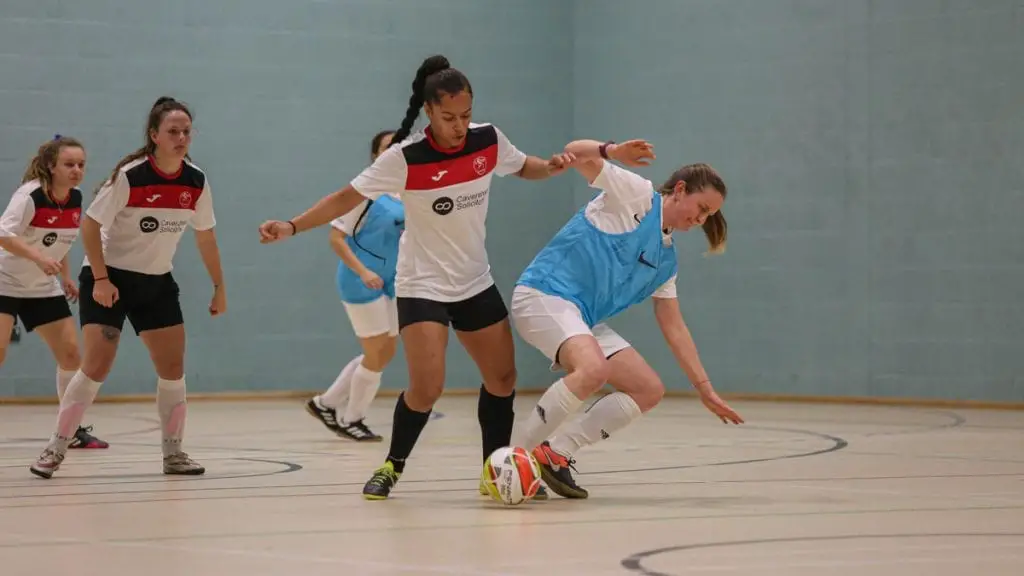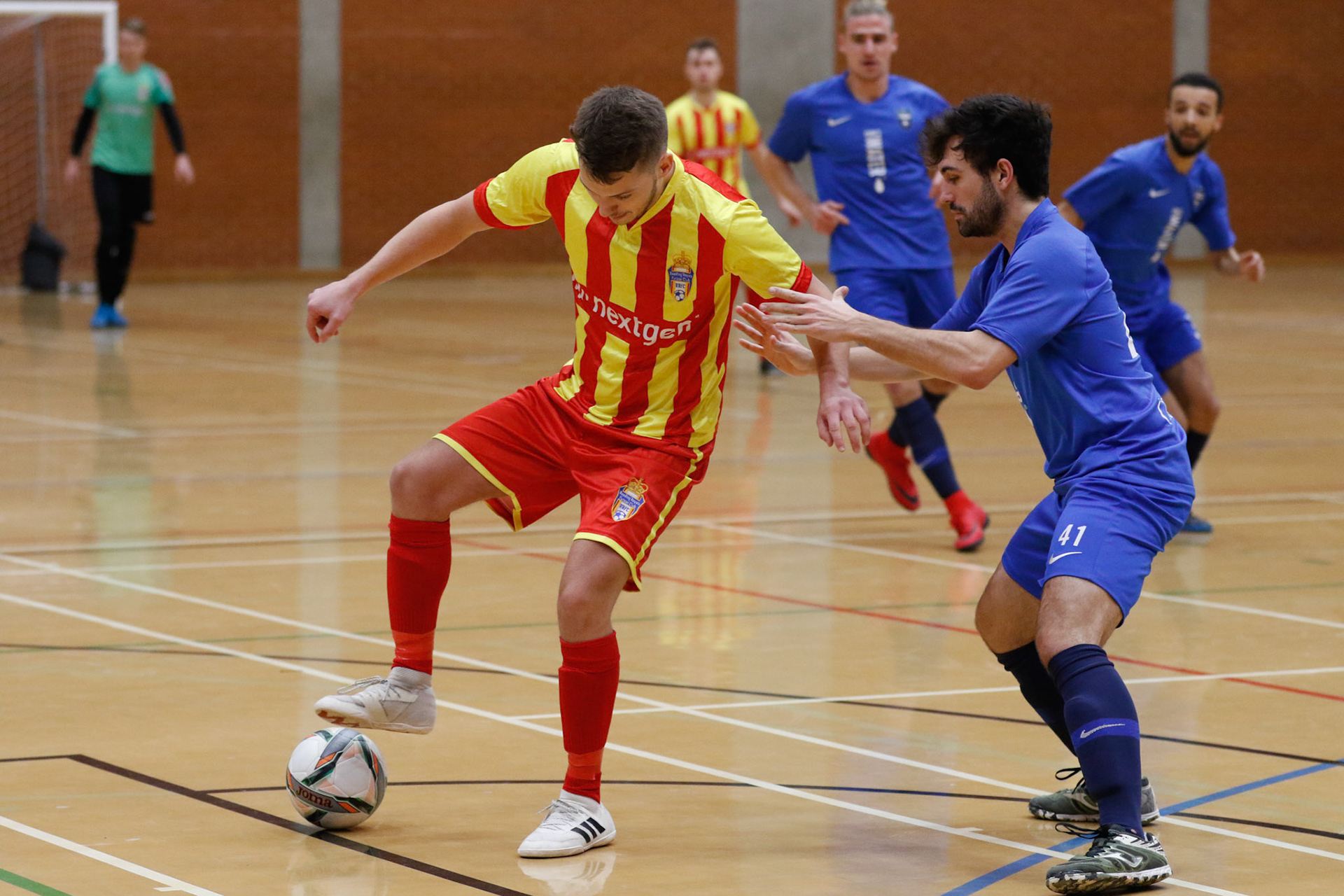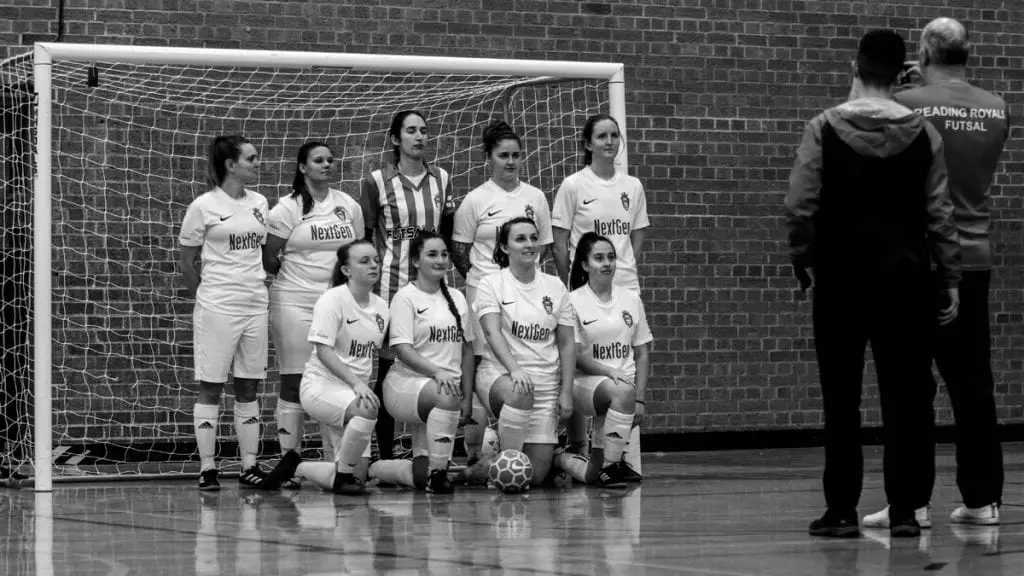- By Alicia Povey
- ** ERROR A **
I’ve had the conversation many times… “Oh, so you play Futsal? That’s indoor 5-a-side, right?” I sigh, take a deep breath, and begin my well-rehearsed explanation of how Futsal is not just 5-a-side, but its own wonderful entity.
In countries such as Brazil, Spain and Portugal, Futsal is well established and is popular in it’s own right, rather than being known as a bolt-on to football. The top leagues have matches televised and are sponsored by large companies, and perhaps it’s for this reason that more people know about, follow and support Futsal teams.
Although Futsal is growing in the UK, to a lot of people the game remains shrouded in mystery. Many assume that Futsal is just a smaller sided version of football, with the same rules and requiring the same skills, while others think that Futsal is simply a training tool for 11-a-side. Perhaps it’s time that we dispelled some of the most common misconceptions surrounding Futsal. There may be more, but here are a few that I’m asked about the most.
Futsal is just indoor 5-a-side
*Sigh*
Yes, Futsal and 5-a-side have some similarities, but they are by no means the same thing. Futsal was not created as an indoor version of football. In fact, UEFA often describes how the game took inspiration from basketball (in terms of player numbers), handball (pitch size), water polo (referee roles) and, of course, football. But let me lay out the differences, plain as can be, for those of you who might still put Futsal and a 5-a-side kick-about with the lads in the same category.
| Futsal | Five-a-side |
| Played to the lines, with ball returned to play using ‘kick-ins’. 4 second time limit for restarts | No lines. Rebound boards and walls are used and the ball is constantly in play |
| Established pitch dimensions governed by regulatory bodies | Pitch size dictated by facilities and halls – little to no consistency |
| All players are allowed to enter either penalty area | Only the goalkeeper is allowed in the penalty area |
| 3m x 2m indoor Futsal goals used | Rectangular 4m x 1m goals used |
| Futsal ball – size 4, 30% reduced bounce | Standard size and regulation bounce football |
| 5 foul limit and ‘penalty’ for infringements after the 5th foul | Unlimited fouls |
| Stop-clock system – timer stopped every time ball is out of play | Clock continues running throughout |
| Time-out permitted once per half | No time-outs |
See? Pretty different! I can also guarantee that if you turned up to a Futsal club and attempted to play 5-a-side rules, you’d be pretty unpopular…
TRY FUTSAL: New Futsal club launched in Maidenhead | Reading Royals Futsal Club are blazing a trail, and you could be part of it
Futsal is for ‘soft’ footballers
There’s a common idea that Futsal is for footballers who don’t like to get stuck in, or those who aren’t as physically strong. When people think of Futsal, they often think of a Hollywood-like portrayal of the game, where players whip around the court so fast that they barely make any contact with anyone. The reality is, however, that Futsal can be just as brutal, if not more so, than football.
In Futsal, you need to be ready to jockey for the ball or make a last-ditch challenge and go flying in the process, and let me tell you… falling on hard courts is a lot more painful than some soft mud and grass!

Futsal is only played as an extra to football
Another common misconception is that Futsal is only a ‘bolt-on’ to football, and is used as a development tool for top footballers rather than a sport in its own right. This is not the case! It’s certainly true that Futsal can sometimes go hand in hand with Futsal for younger players, just look at Messi and Neymar who grew up playing Futsal on the streets of their home countries before making the step into professional football. However, there are plenty of Futsal players who solely play Futsal and wouldn’t be seen dead on the football pitch.
In countries like Brazil, Spain, Portugal and Italy, there are real opportunities to play Futsal professionally (unfortunately, not in the UK quite yet). These players are almost certainly not allowed to play football alongside Futsal, and if they were, would chose not to. Interestingly, I recently spoke to Sofia Vieira, a women’s Futsal player for Portugal who believes that playing football alongside Futsal can make you a worse Futsal player, but that playing Futsal alongside football can make you a better football player…
Either way, Futsal is not just an add-on to football, and even though many people choose to complement their football with Futsal or vice-versa, neither sport is ‘inferior’ or simply a development tool for the other.
Futsal is for show-boaters

“Futsal is just big egos, step-overs and flicks every other second, blah, blah, blah…”
Whoever thinks that this is the case hasn’t seen a proper game of Futsal in their life! Futsal isn’t for show-boaters, despite there being a high skill element involved. Futsal is meant to be played at an extremely fast pace, hence the short half times – if someone is taking their sweet time doing flicks and tricks on the ball, you can be sure that they’ll be quickly dispossessed and their opponents will likely score on the counter before they’ve had a chance to show off their latest rainbow flick.
Yes, on occasion some cheeky skill comes out (and I am definitely guilty of attempting a few step-overs too many) but there’s no more show-boating than you would see down the rec for a Sunday League match.
If you’re good at football, you’ll be good at Futsal

Sadly, for those football players who claim that they’d do wonders on the Futsal court, this isn’t the case. Futsal requires a slightly different skill set, and just because you’re a starter in your Sunday league side, doesn’t mean you can click your fingers and be the perfect Futsal pivot (striker). On the Futsal court, quick thinking is incredibly important, and if you’re used to having time to make decisions on the football pitch, being closed down within a couple of seconds of receiving the ball can be a bit of a shock! Your touch also has to be practically perfect in Futsal, and you’ll need to get used to using the soles of your feet to control the ball rather than the sides. It’s certainly a steep learning curve for any footballer who’s looking to make the move over!
Not as easy as you thought, eh?
Listen to Alicia Povey discuss all things Futsal with Football in Berkshire’s Rob and Tom on the Berkshire Football Stories podcast here. You can also hear Sarah Thompson discuss the game here.
Upcoming fixtures
Saturday 13th December 2025
Football in Berkshire has a Breaking News WhatsApp Channel where we’ll send you updates on all the latest football news from the Royal County. You can join Breaking Berkshire Football News by clicking here.
- Read more stories like this: Futsal, Maidenhead Futsal Club, Reading Royals Futsal Club






One Response
Very information article everyone who loves football or futsal should read articles like these